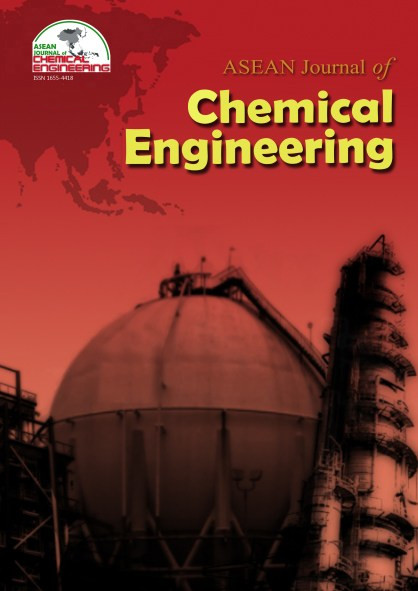Sludge Composting: A Case Study on Palm Oil Mill Sludge (POms)
Abstract
Current disposal technology for palm oil mill sludge (POMS) creates problems such as sludge flooding insects, and bad odor mainly during the rain season. This study we present in-vessel composting system as an alternative process for disposal of POMS. Maximum temperature achieved for reactor was about 400C. It can be verified that the composting process followed first order kinetic equation with degradation rate k = 0.014 day-1 with maximum degradation rate of 51%. POMS compost has potential to improve performance of C. citratus growth in sandy soil that usually lacks nutrients and has poor soil structure.
References
2. Aggelides, S.M., and P.A. Londra. (2000). “Effects of compost produced from town waste on the physical properties of a loamy and clay soil.” Bioresource Technology 71, 253-253.
3. APHA. (1985). Standard Methods for Examination Water and Wastewater, 16th edn. American Public Health Association, Washington, DC.
4. Bhamidimarri, S.M.R., and Pandey, S.P. (1996). Aerobic thermophilic composting of piggey solid wastes. Wat. Sci. Technol. 33, 8, 89- 94.
5. Diaz, M.J., Madejon, E., Lopez, F., Lopez, R., and Cabrera, F. (2002). Optimisation of the rate vinasse/grape marc for co-composting process. Proc. Biochem., 37, 1143-1150.
6. Droste, R. 1997. Theory and Practice of Water and Wastewater Treatment. John Wiley and Sons, New York.
7. Hoyos, S.E.G., Juarez, J.V., Ramonet, C.A., Lopez, J.G., Rios, A.A., and Uribe, E.G. (2002). “Aerobic thermophilic composting of waste sludge from gelatin-grenetine industry.” Resour., Conserv. and Recycling. 34, 161-173.
8. Keeling, A.A, Paton, I.K., and Mullet, J.A.J. (1994). “Germination and growth of plants media containing unstable refuse-derived compost. Soil Biology and Biochemistry 26, 6, 767-772.
9. Lasaridi, K.E., Stentiford, E.I., and Evans, T. (2000). “Windrow composting of wastewater biosolids: Process performance and product stability assessment.” Water Science & Technology 42, 9, 217–226.
10. Levenspiel, O. (1999). Chemical reaction Engineering. John Wiley and Sons, New York.
11. Liao, P.H, Jones, L., Lau, A.K., Walkemeyer, S., Egan, B. and Holbe, N. (1997). “Composting of fish wastes in a full-scale invessel system.” Bioresource Technology, 59, 2-3, (February-March 1997) 163-168.
12. Liao, P.H., Vizcarra, A.T., and Lo, K.V. (1994). “Composting of salmon-farm mortalities.” Bioresource Technol., 47, 67-71.
13. Nogueira, W.A., Nogueira, F.N. and Devens, D.C. (1999). Temperature and pH control in composting coffee and agricultural wastes. Wat. Sci. Tech. 41, 1, 113-119.
14. Paredes, C., Bernal. M.P., Cegarra, J., and Roig, A. (2002). “Bio-degradation of olive mill wastewater sludge by its co-composting with agricultural wastes.” Biores. Technol, 85, 1-8.
15. Paredes, C., Roig, A, Bernal, M.P., Sánchez- Monedero, M.A. and Cegarra, J. (2000). “Evolution of organic matter and nitrogen during co-composting of olive mill wastewater with solid organic wastes.” Biol Fertil Soils 3, 222 –227.
16. Qiao, L., and Ho, G. (1997). “The effects of clay amendment on composting of digested sludge. Wat. Res., 31, 5, 1056-1054.
17. Rahman, Rakmi Abd., Kalil, Mohd. Sahaid, and Yaser, Abu Zahrim (2003). Composting palm oil mill sludge–sawdust: Effect of different amount of sawdust. Proceedings of National Workshop in Conjunction with ARRPET Workshop on Wastewater Treatment and Recycling 2: Removal Chloroorganics and Heavy Metals. ISBN 983-2982-04-9.
18. Wilson, S.B., Stoffella, P.J, and Graetz, D.A. (2001). “Use of compost as a media amendment for containerize production of two subtropical perennials.” J. Environ. Hort., 19, 37-42.
Copyright holder for articles is ASEAN Journal of Chemical Engineering. Articles published in ASEAN J. Chem. Eng. are distributed under a Creative Commons Attribution-NonCommercial 4.0 International (CC BY-NC 4.0) license.
Authors agree to transfer all copyright rights in and to the above work to the ASEAN Journal of Chemical Engineering Editorial Board so that the Editorial Board shall have the right to publish the work for non-profit use in any media or form. In return, authors retain: (1) all proprietary rights other than copyright; (2) re-use of all or part of the above paper in their other work; (3) right to reproduce or authorize others to reproduce the above paper for authors’ personal use or for company use if the source and the journal copyright notice is indicated, and if the reproduction is not made for the purpose of sale.



